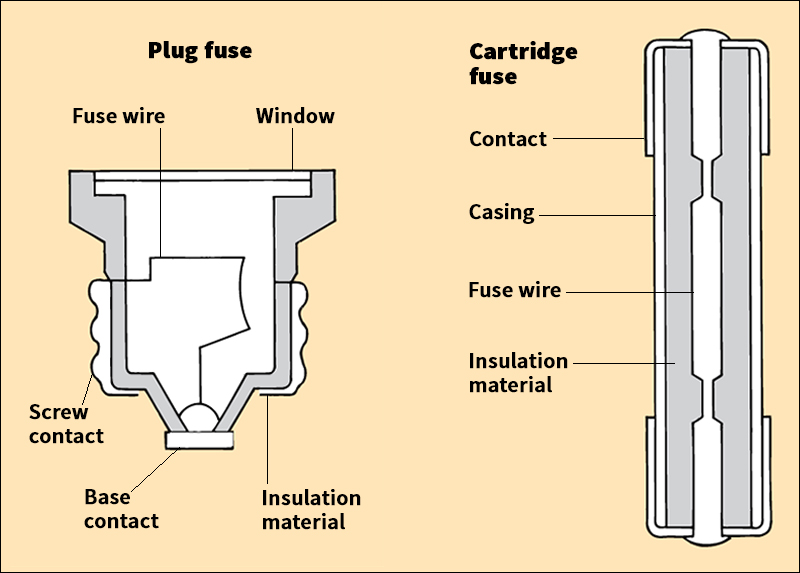Fuse is a device that protects an electric circuit against damage from excessive current. A fuse contains a short piece of wire made of an alloy that melts readily. The flow of current through a fuse causes the wire to heat up. The wire melts when excessive current passes through the fuse. This action burns out the fuse and breaks the circuit. It also interrupts the flow of electric current because a fuse is always connected in series with the circuit it protects (see Electric circuit (Series circuits) ). A burned-out fuse—commonly called a “blown” fuse—must be replaced for the circuit to function.
Fuses are manufactured in a variety of current ratings. The current rating indicates how much electric current the fuse can carry without burning out. The rating is determined by the diameter of the wire used in the device. Some fuses can carry only a fraction of an ampere, but others carry hundreds of amperes.
A type of fuse called a plug fuse is used in many homes. A plug fuse has a “window” of glass or mica over its wire. This feature makes it possible to quickly check whether a fuse has burned out. Another type of fuse, the cartridge fuse, is used in circuits that require large amounts of electric power, such as those for air conditioners and electric ranges. Miniature cartridge fuses are used in automobiles and in amplifiers, television sets, and other electronic equipment. Some fuses are specially designed to withstand a current overload for a limited time. These time-delay fuses are useful for electric motors that need a large surge of current during start-up.

Many new homes are equipped with automatic circuit breakers instead of fuses (see Circuit breaker ). These devices can be reset and so they do not have to be replaced after a current overload.
